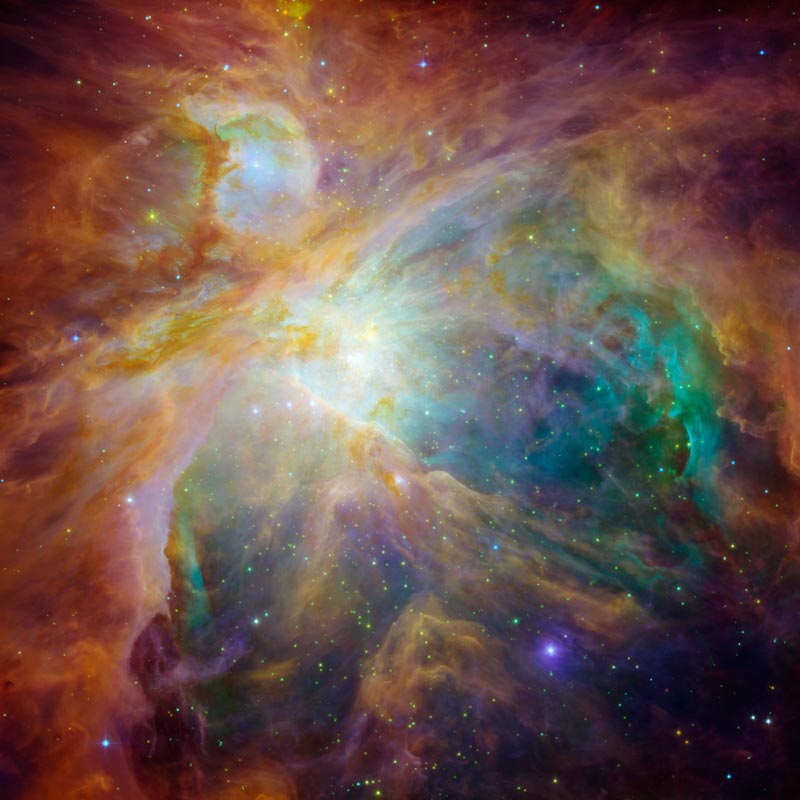For young stars, stellar outflows are the rule. T Tauri stars and other young stars eject matter in generally collimated jets. However, a region in Orion’s giant molecular cloud known as the Becklin-Neugebauer/Kleinmann-Low (BN/KL) region, appears to have a clumpy, scattered set of outflows with “finger-like” projections in numerous directions. A new study, led by Luis Zapata at the National Autonomous University of Mexico, explores this odd region.
To conduct their study, the team used the Submillimeter Array to trace the motion of carbon monoxide gas in the area. Flying away from this region are three massive and young stars. Tracing their paths back, astronomers had previously determined that these stars likely had a common origin as members of a multiple system that for some reason, broke apart an estimated 500 years ago. Likely related to this, the new study discovered several new fingers of gas moving away as well with velocities that implied they came from the same point of origin near the same time. But what could send stars and gas hurtling outwards?
Nearby, the team also discovered a “hot core” of material as well as a “bubble” of empty space near the point of origin of the event. To explain the combination of these three events, the team proposes that an close interaction between the three stars (or perhaps more) occurred. At that time, the interaction tore apart any potential binary system throwing the stars outwards.
Since the stars are young and still embedded in a nebula, the team suggests it was likely they also contained circumstellar disks that had not yet formed planets. During the interaction, the outer portions which would be least strongly bound, were thrown outwards, creating the finger-like projections. Material that was bound more tightly but just enough to be torn off, “would find itself with an excess of kinetic energy, and will start to expand” creating the apparent bubble. If that bubble, expanding supersonically for the local medium, encountered a region that was overly dense, it would collide, heating the region and potentially forming the hot core.
This new discovery presents a potential first for the discovery of one or more destroyed circumstellar disks. Such findings could help impose new constraints on how planetary systems form since most stars form in open clusters and associations in which such interactions may be commonplace. Yet, the very fact that such destroyed systems have never been found until now imply that interactions sufficiently close to cause such disruption are rare. Regardless, such things will help astronomers form a better picture of the formation of planets.


Hi. Nice article. Very interesting stuff. Just curious as to the source of the image of M42. Is it a Hubble image, a Spitzer image, or a composite, and where can I get a high resolution copy? Thanks.